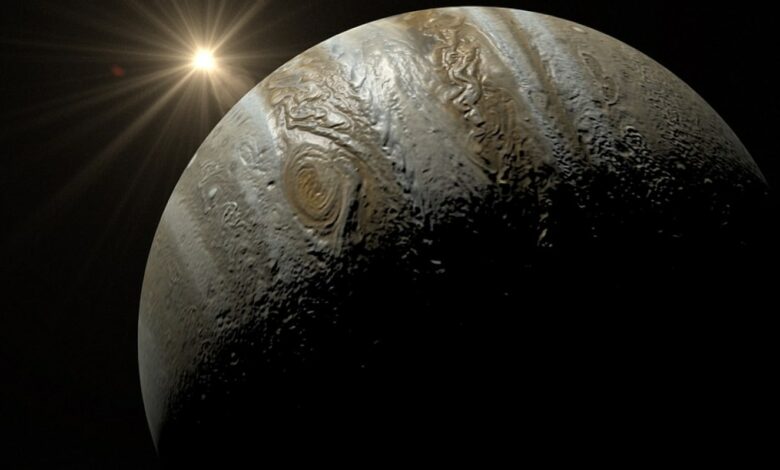The terrestrial storms on Jupiter may be caused by magnetic tornadoes

Magnetic vortices descending from Jupiter’s ionosphere into the deep atmosphere are believed to cause the formation of ultraviolet-absorbing anticyclonic storms, according to a study published Nov. 26 in Nature Astronomy. These storms, which appear as dark ovals, span the extent of Earth and have been observed mainly in Jupiter’s polar regions. The phenomenon was first detected in ultraviolet (UV) light by the Hubble Space Telescope in the 1990s and later confirmed by NASA’s Cassini spacecraft in 2000.
Research Reveals Tornado Dynamics
The studypublished in the journal Nature, was led by Troy Tsubota, an undergraduate researcher at the University of California, Berkeley, in collaboration with Michael Wong of UC Berkeley, Amy Simon of NASA’s Goddard Space Flight Center and others.
The findings suggest that these dark ovals are formed by swirling magnetic tornadoes generated due to friction between Jupiter’s immense magnetic field lines and those in its ionosphere. These tornadoes are believed to set aerosols in motion, creating dense patches of UV-absorbing haze in the stratosphere.
The role of the Io plasmatorus
The study highlights that Jupiter’s magnetic field, one of the strongest in the solar system, interacts with the Io Plasma Torus – a ring of charged particles released by volcanic activity on Jupiter’s moon Io. This interaction generates friction and possibly causes magnetic vortices to descend into the planet’s atmosphere.
The exact mechanism remains unclear, with researchers wondering whether these tornadoes dredge up material from deeper atmospheric layers or create the haze independently.
Regular observations confirm patterns
The Outer Planet Atmospheres Legacy (OPAL) project, which takes annual images of Jupiter using the Hubble Space Telescope, played a crucial role in the discovery. Between 2015 and 2022, dark ovals were observed in 75% of images at the South Pole, but were significantly rarer at the North Pole. These formations typically appear within a month and disappear within two weeks, resembling a magnetic “tornado alley.”




